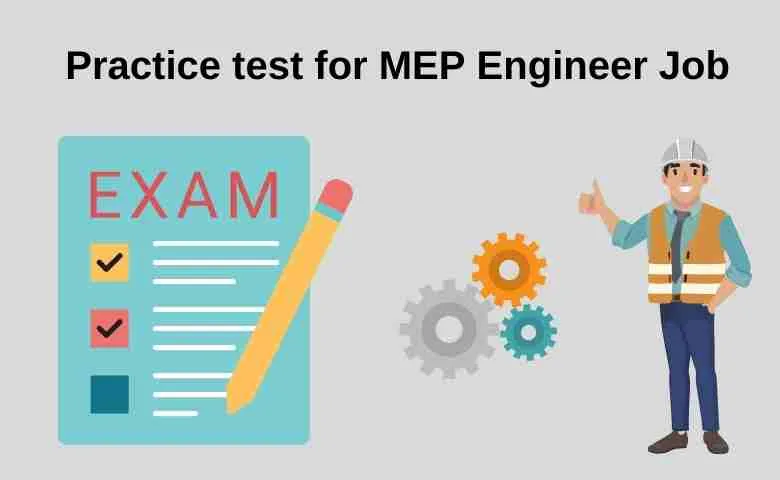Last Updated on April 4, 2024 by Admin
Are you preparing for a job as an MEP Engineer? If so, taking a practice test can be a valuable tool to help you gauge your knowledge and skills in the field. This test consists of 25 multiple-choice questions that cover various topics related to mechanical, electrical, and plumbing (MEP) engineering, which are essential components of building design and construction.
ConstructionCareerHub App is LIVE — built ONLY for construction careers. Don’t apply with a weak resume.
Get ATS-ready Resume Lab + Interview Copilot + Campus Placement Prep (resume screening, skill gaps, interview readiness) — in minutes & Other advanced features.
Explore Smarter Construction Career Tools →Quick check. Big impact. Start now.
During the test, you will have 25 minutes to answer all the questions, giving you enough time to carefully read and analyze each question before selecting your answer. It’s important to note that each question has only one correct answer, so choose the best option you think is most appropriate for the given scenario.
Topics covered in this practice test include the role of an MEP Engineer, the purpose of different systems such as chilled water and fire suppression, and essential skills required for the job. Additionally, you will be tested on understanding the different types of air volume systems and your knowledge of mechanical and electrical codes and standards.
By taking this practice test, you’ll be able to identify your strengths and weaknesses in the field and determine areas where you may need additional study or practice. So, if you’re looking to prepare for a career as an MEP Engineer, take this practice test and see how you measure up! Once you finish the test, you will get an instant test result. Good luck!
FAQs
Yes, you can retake the practice test as often as possible. It’s designed to help you identify areas needing additional study or practice.
The practice test consists of 25 multiple-choice questions with a time limit of 25 minutes.
Yes, the practice test is free to take and requires no registration or payment.
The practice test covers a range of topics related to mechanical, electrical, and plumbing engineering, including the primary role of an MEP Engineer, different systems such as chilled water and fire suppression, essential skills required for the job, and knowledge of mechanical and electrical codes and standards.



